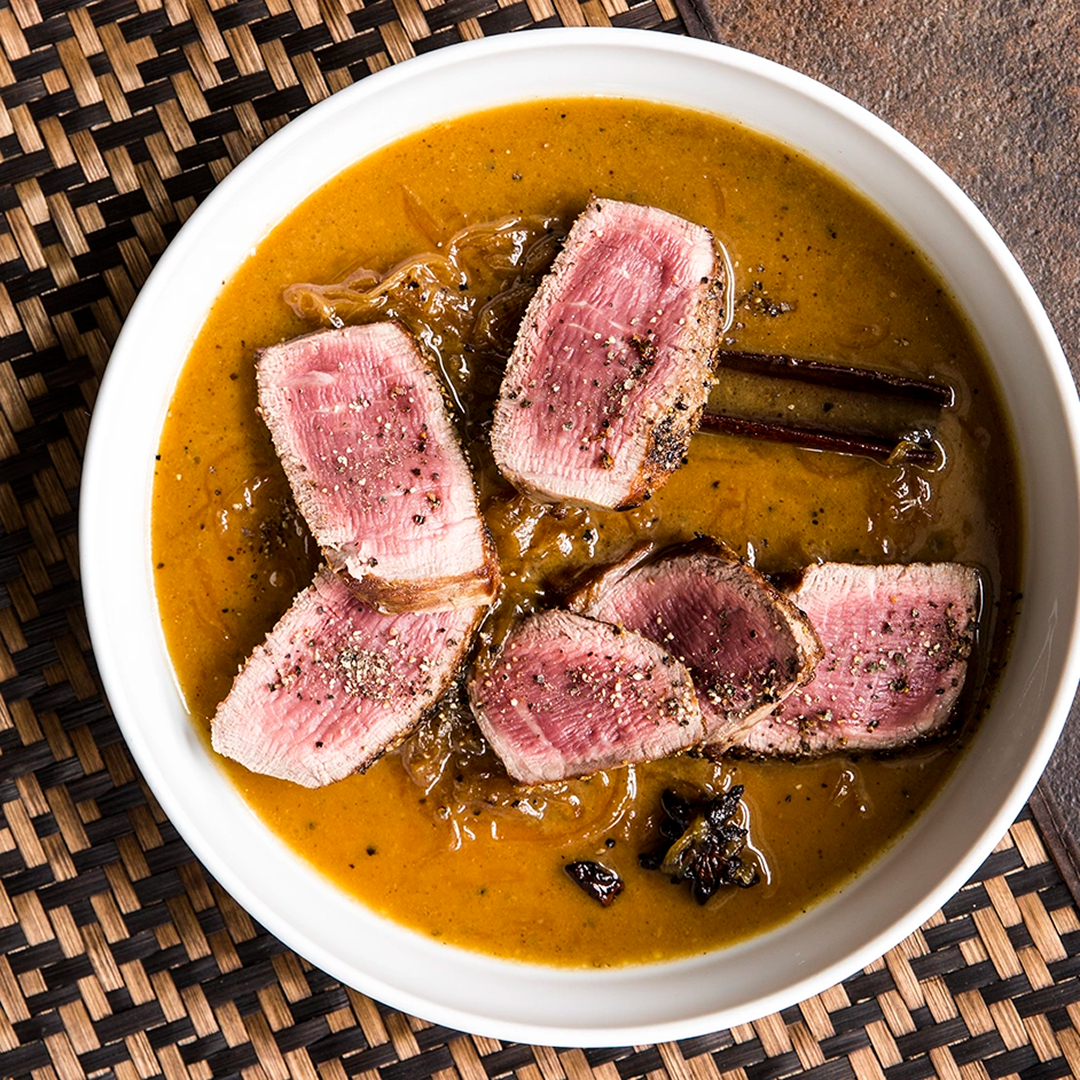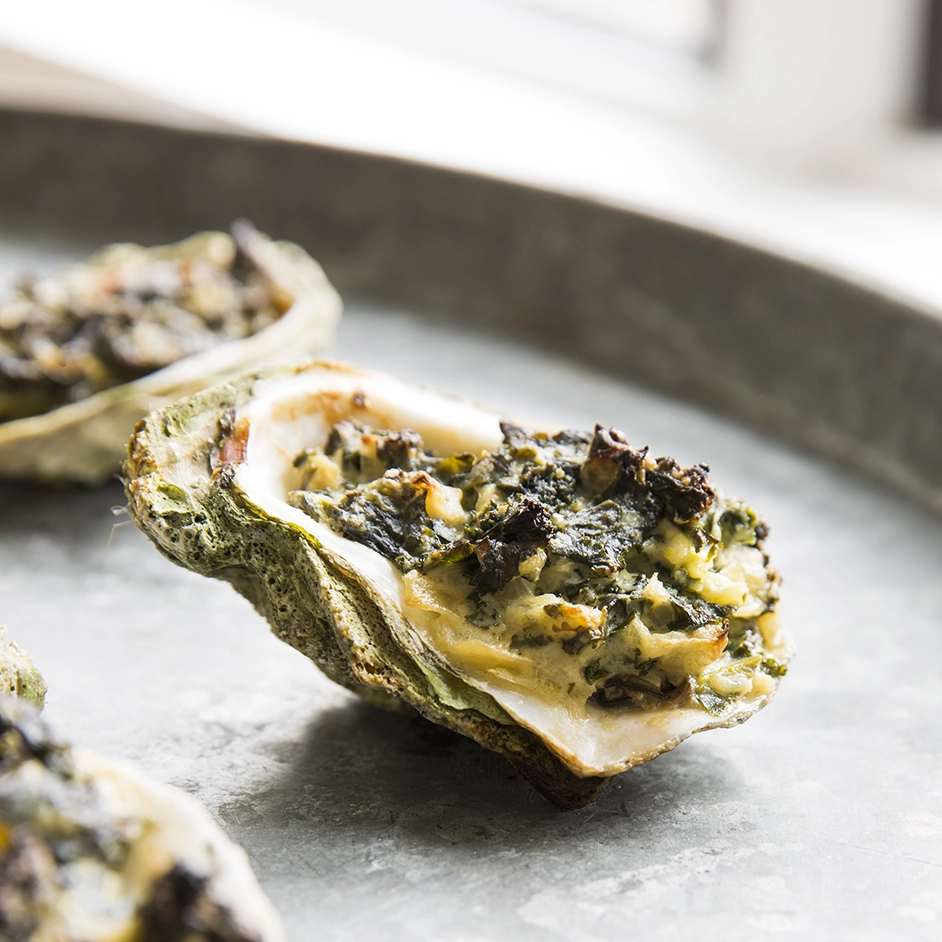Korean Braised Goat and Dumplings

The following recipe is an excerpt from Cook Like a Local
Serves 6
As a chef, if you’re lucky, a dish that you create becomes a “signature” dish—that one item on the menu that is the most popular with guests and the most talked-about in the media (and the most Instagrammed). You don’t always have control over which dish captures this social energy. It may not even be your personal favorite, but suddenly it becomes part of your identity.
This is my signature dish, and I still love it, even after serving thousands of bowls a month and cooking hundreds of pounds of rice cakes. Its most obvious point of inspiration is tteokbokki, the Korean street snack of chewy rice cakes and spicy gochujang sauce. But our version has absorbed some of the other cultural influences around us. Though it strays from the Korean recipes that I’ve seen, it’s authentic to my experience of Houston—where tinder braised goat meat is a fixture of our taquerias, some of which are located right across the street from Kong Ju Rice Bakery, where I pick up fresh rice cakes (along with kimchi and freshly pressed sesame oil). These foods exist together in our city, on that block, so it made sense to me to make them exist together on a plate.
Ingredients
For the Goat
3-pound piece of bone-in goat leg
2 medium onions, roughly chopped
3 medium carrots, roughly chopped
6 celery stalks, roughly chopped
6 garlic cloves
For the Stew
¼ cup vegetable oil
8 ounces cylindrical Korean rice cakes, cut into 1-inch pieces
½ medium white onion, thinly sliced
½ cup gochujang
¼ lager beer
4 tablespoons unsalted butter, chilled
¼ cup sliced scallion
Serves 6
As a chef, if you’re lucky, a dish that you create becomes a “signature” dish—that one item on the menu that is the most popular with guests and the most talked-about in the media (and the most Instagrammed). You don’t always have control over which dish captures this social energy. It may not even be your personal favorite, but suddenly it becomes part of your identity.
This is my signature dish, and I still love it, even after serving thousands of bowls a month and cooking hundreds of pounds of rice cakes. Its most obvious point of inspiration is tteokbokki, the Korean street snack of chewy rice cakes and spicy gochujang sauce. But our version has absorbed some of the other cultural influences around us. Though it strays from the Korean recipes that I’ve seen, it’s authentic to my experience of Houston—where tinder braised goat meat is a fixture of our taquerias, some of which are located right across the street from Kong Ju Rice Bakery, where I pick up fresh rice cakes (along with kimchi and freshly pressed sesame oil). These foods exist together in our city, on that block, so it made sense to me to make them exist together on a plate.
Step 1
Braise the goat: Put the goat leg in a large stockpot and add the onions, carrots, celery, and garlic. Fill the pot with water so that the ingredients are completely submerged. Bring to a boil over high heat, then reduce to a gentle simmer over very low heat. Cover tightly and let simmer for at least 7 hours, until very tender, checking occasionally to see if you need to add more water to keep the goat submerged.
Step 2
Drain, discarding the liquid and aromatics. When the goat is cool enough to handle, pull off all the meat, discarding any bones or tough cartilage. Set aside. (The pulled meat will keep in a covered container in the refrigerator for up to 4 days.)
Step 3
Prepare the stew: In a large skillet, heat the oil over medium-high heat until shimmering-hot. Add the rice cakes, spreading them out in a single layer. Cook, stirring occasionally, for about 6 minutes—let the dumplings get a little bit of golden brown color in spots, and they might puff slightly. (Some recipes call for boiling rice cakes, but I much prefer the texture they get when pan-fried— they’ll be crispy on the outside and soft and chewy on the inside.)
Step 4
Add the sliced onion and the pulled goat meat and cook, stirring, until the mixture is well combined and warm throughout, and the onion has softened, about 8 minutes. Add the gochujang and beer and cook, stirring to combine, for 2 to 3 minutes. Remove the pan from the heat, add the butter, and gently stir it in to enrich the sauce. Divide the stew among bowls and garnish with the scallion. Serve immediately.


